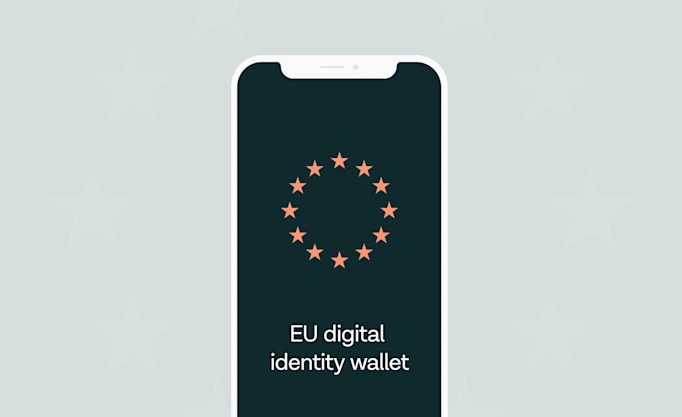3 ways lenders can take advantage of open banking

By opening up access to financial data, open banking is bringing benefits to many different industries. There's tremendous potential for improvements to both customer experience and business operations thanks to the removal of friction and the value potential of transactional data, and here are a few different ways lenders can use open banking capabilities to get a competitive edge.
Lenders have a lot to gain by tapping into open banking.
It can help simplify customer onboarding, instantly verify income and streamline invoice payments.
This can increase revenue by improving conversion, reducing costs, optimising risk, or increasing repayment rates.
Until recently, the lending industry has frequently had to rely on often outdated and limited financial records and lengthy processes to make assessments, placing a limitation on the ability of lenders to both quickly and accurately make credit risk decisions.
This can sometimes lead to a mismatch between customers’ needs and what lenders can provide them – resulting in excluded, under served, or unhappy customers – and ultimately a negative impact on business results.
But now they can get access to relevant, up-to-date financial information, directly from customers’ accounts. We’re talking verified data, coming straight from the bank. No fudged numbers. No friction-filled delay. Verified income – based on real-time transactions.
Naturally, this comes with a lot of benefits. Here are 3 simple ways lenders can take advantage of open banking to increase revenue – be it by optimising risk and approval rates, reducing costs or just attracting more customers.
1. Simpler customer onboarding
The first interactions you have with a customer are critical. You can have a great product and great marketing – but that can quickly go down the drain if you don’t provide a good user experience from the very beginning, in the application process.
When it comes to financial products, and lending in particular, customers usually need to provide a lot of information from the get go – KYC details, account numbers and personal data. In the past this was done with customers filling out forms, which could include the occasional typo or slightly embellished incomes. It could be hard to ensure the information was accurate.
By using open banking, you can now get information like name, account number, and even personal ID data directly from a user’s bank account. And then automatically fill in it for them. No manual work required, no room for errors. This means less friction, which in turn results in higher conversion rates.
2. Instant income verification
Although they help lenders meet regulatory requirements and mitigate risk, the most common income verification methods used today aren’t that great. They cause friction and delay in the application process (negatively impacting conversion), they’re often costly (as they require manual processing) – and they’re not even giving you all the information you want.
With open banking, lenders can instantly verify income directly from a user’s bank account. Based on real-time transaction data. And with just a few clicks.
Customers can give access to their transactions by connecting to their banks – and from these transactions lenders can receive a full and aggregated view of an applicant’s income streams. This means you can quickly verify how much a user gets paid every month, if their income is steady (and current), or even see recent salary changes that could make them eligible for a higher loan or more favourable terms. The result is a convenient and reliable process for verifying a complete income. You get the facts, without the friction.
By skipping the need for manual verifications, you reduce costs. And by being able to verify income based on real-time data (instead of month-old payslips), you can optimise risk and approval rates.
3. Easier invoice settlement
Besides opening access to financial data and making it easier for customers to share their account information, open banking also offers a way for customers to easily initiate payments straight from their accounts.
This can help lenders with making the invoice settlement process easier. Instead of customers having to fill in their account and invoice reference numbers themselves, autofill can also come into play here and do the work for them.
The data is fetched and automatically populated. All customers need to do is approve, and the bill can be paid directly in your app or website. Easy, fast, and with no need for cards or hidden fees from other payment providers.
Making it easier for customers to settle their invoices leads to an increase in repayment rates for your business (and a lot less headaches and frustration for them).
Taking advantage of it all
Lenders have the opportunity to create a lot of value by leveraging new capabilities made possible by open banking. The 3 examples above are just a sampler, and the solutions above can be used independently or together to improve all steps of the customer journey.
Interested in learning more? Get to know more about our instant income verification offering. If you’re curious to explore other benefits, or discuss how you’d like to leverage open banking to get tangible business results, get in touch – we love a good chat.
More in Open banking

2025-06-09
11 min read
The case for “Pay by Bank” as a global term
Thomas Gmelch argues that "Pay by Bank" should be adopted as a standard term for open banking-powered account-to-account payments to reduce confusion, build trust, and boost adoption across the industry.
Read more

2025-06-02
3 min read
Tink joins Visa A2A – what it means for Pay by Bank and VRP
Visa A2A brings an enhanced framework to Pay by Bank and variable recurring payments (VRP) in the UK, and Tink is excited to be one of the first members of this new solution.
Read more

2024-11-19
12 min read
From authentication to authorisation: Navigating the changes with eIDAS 2.0
Discover how the eIDAS 2.0 regulation is set to transform digital identity and payment processes across the EU, promising seamless authentication, enhanced security, and a future where forgotten passwords and cumbersome paperwork are a thing of the past.
Read more
Get started with Tink
Contact our team to learn more about what we can help you build – or create an account to get started right away.
